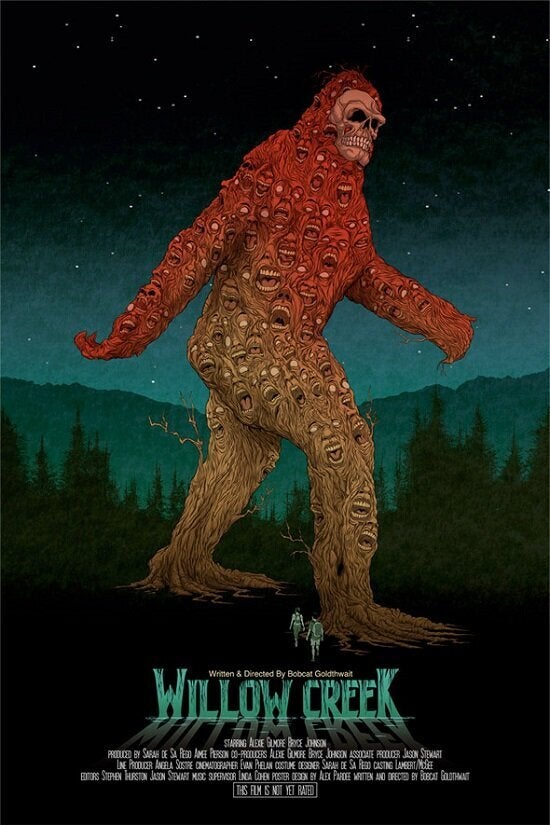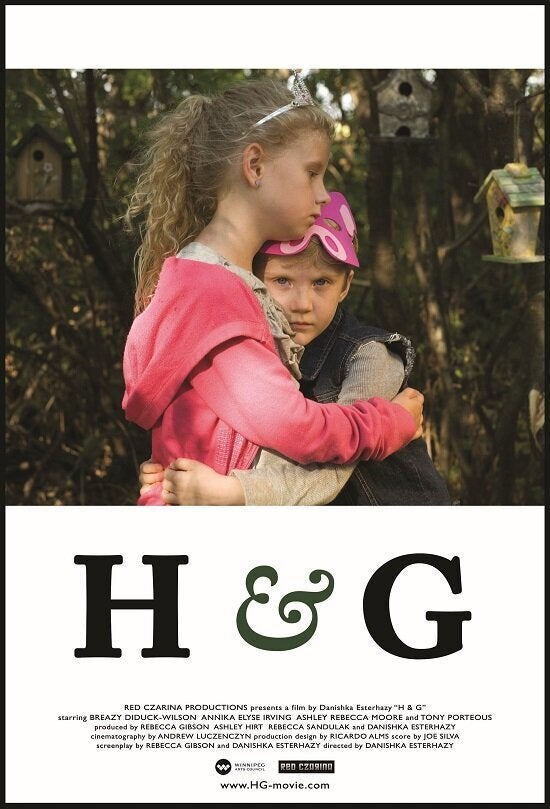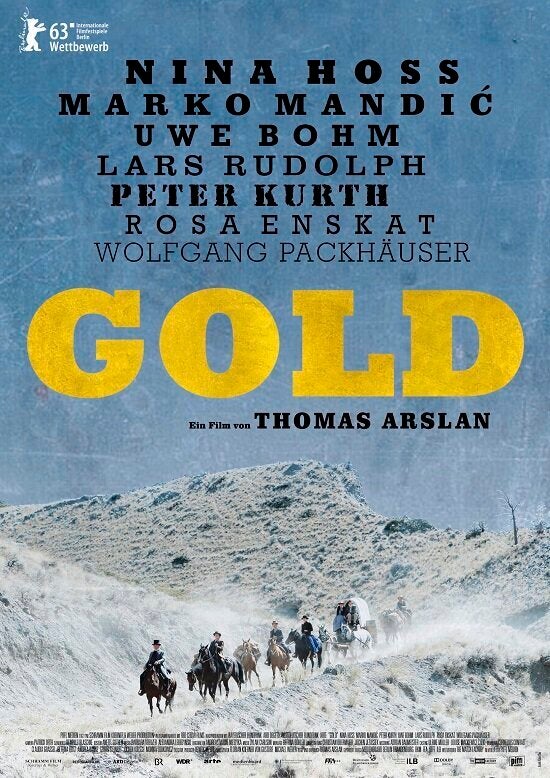
There's a universal, archetypal aspect to films that chart the ordeals of city folk who venture unwisely into the country -- or so says Carol Clover, in Men, Women and Chainsaws: Gender in the Modern Horror Film. Clover draws parallels between what she calls the "urbanoia" thriller and "Little Red Riding Hood:" turn the wolf into a gang of rapists, who want to rape Red, rather than eat her, and you've got the first half of the rape-revenge classic I Spit On Your Grave, for instance.
Besides having a glaring class dimension, another aspect of the appeal of such films, according to Clover, is that they present cityfolk in the audience a chance to vicariously test our mettle: can we "do what is to be done under such conditions -- eat raw meat, sleep on the bare ground, betray our comrades, kill someone?" Or has city life made us too soft?
2013's VIFF has no shortage of films that ask these questions, with film after film plunging its characters into ordeals in the wilds, from which they may not emerge. Not all of these are horror films -- though even ones that aren't partake of elements of the genre, such as Danishka Esterhazy's H&G -- an updating of a fairy tale that, even in the original, has its share of horrific elements.
"I had previously made two short films inspired by fairy tales," Esterhazy explains -- 2005's "The Snow Queen" and 2009's "The Red Hood." "After I'd finished my first feature, Black Field, I was searching around for a new idea to make a new film, and I was naturally drawn back to fairy tales.
"Hansel and Gretel", Esterhazy says, "is such a powerful fairytale, because it has such a dark core. And it's a story about child poverty, and child abandonment, and child murder, so when I was looking at that story I wondered, 'what would that story look like in a contemporary world?'"

After being abandoned at the roadside by their Mom's negligent boyfriend, the two children -- Harley and Gemma -- follow a trail to a farm occupied not by a cannibalistic witch, run by Brendon, a lonely man-child with an apparent fondness for young boys. It's not a horror film per se, but the longer the children remain in the care of this misfit, the more disturbing H&G gets, touching not just on pedophilia but on the Pickton pig farm and serial murder.
One of the more inspired moments in the film -- and one of the more horrifying -- has Harley and Gemma locked in a workshop, where they look inside a freezer. Cleverly, Esterhazy refrains from letting us see the freezer's contents; we only see the children's reaction.
"We actually shot what was in the freezer," the director confesses -- asking me to keep the contents of the shot a secret -- "but I didn't like the way the first shot had turned out. So we were planning on re-shooting it, but I left it out of the rough cut, and I was showing it to my creative team -- my DP and a couple of other filmmakers I respect here in Manitoba -- and they all responded very differently to what was in the freezer. That kind of surprised me, and I really loved it, because I wanted Brendon's character to be ambiguous, and I wanted the audience to make up their own minds as to what degree of criminality, if any, he's guilty of. And so leaving that image out does allow the audience to construct their own judgment of Brendon's guilt, by deciding for themselves what's in the freezer."
Class plays a clear dimension in H&G, though in inversion of the usual pattern, it is Harley and Gemma who occupy the impoverished position; Brendon is given none of the signifiers of being poor that mark such films, and his brother -- a different sort of opportunist altogether -- drives a new car and seems to be doing all right by himself.
Usually, outdoor ordeal films, at least of the horror genre, involve members of the middle classes suffering for their privileges, and ultimately being forced to defend them violently against poor people with a righteous grudge. In the greatest Canadian exemplar of the subgenre, Rituals, the killer is a deformed veteran stalking a group of doctors on a backwoods vacation, to punish them for what he has endured, but there's no end to the variety of claims to be made against the wealthy in these films. The poor want revenge because their land is about to be flooded, in Deliverance; because they lost their jobs, as in The Texas Chainsaw Massacre; because they were victims of atomic testing, in The Hills Have Eyes; because someone they love has been harmed by the actions of the spoiled rich intruders, as in Pumpkinhead; because they can't afford medicine, in Turistas.
Bobcat Goldthwait's Willow Creek (not to be confused with the Australian outdoor ordeal horror film, Wolf Creek), also has a class element, "Altered States" Series programmer at VIFF, Curtis Woloschuk says. The story follows two documentary filmmakers to the region where the famous Patterson-Gimlin bigfoot film was shot.
"When you go to Willow Creek with them," Woloschuk reports, "and you see the 'Bigfoot Gallery,' of various art pieces of varying quality, inspired by the Sasquatch legend, and you go to diners that are all themed about the Sasquatch, and there's open mic nights where people sing their ballads to the Sasquatch... it kind of entices you into looking at this as if it were kind of held up for ridicule. Which is what the characters in that film do: they get to a point where they are belittling the people in this community to some degree, and hiding their smirks and such. Obviously, their comeuppance does arrive."

For those who like the idea of films that pit human ingenuity against nature -- but could do without the horror element -- there's Thomas Arslan's Gold. The film comes on like a cross between Meek's Cutoff and Aguirre the Wrath of God, with an added helping of Dead Man -- especially in the music; Seattle guitarist Dylan Carlson, of doom band Earth, ably subs for Neil Young on the soundtrack.
The story follows a group of ambitious German immigrants into the wilds of 19th century British Columbia, en route to Dawson and a dreamed-about payday. The BC locations are gorgeous, and Christian Petzold regular Nina Hoss -- who was a hit with the 2012 drama Barbara - plays a particularly appealing main character, an independent woman whose resolve to reach her goal exceeds that of her male companions.
The new Robert Redford vehicle, All Is Lost, pits Redford against the Indian Ocean. The Summit is a "disaster-on-K2" mountain climbing documentary. The Oxbow Cure has a woman unraveling in a remote mountain cabin; Tracks uses the Australian outback as the backdrop for its female protagonist's inner turmoil, as she attempts to cross the desert on foot (with the help of a few camels) - while another kind of desert ordeal is charted by the sports doc Desert Runners.
And at least two films in this year's fest take the point of view of Clover's "threatening rural Other," rather than city dweller: in Stemple Pass, experimental filmmaker and VIFF favourite James Benning goes into the woods of Montana to explore the case of the Unabomber, whose retreat from technology saw him living in an isolated cabin -- reconstructed for the film by Benning himself, who narrates from Ted Kaczynski's journals. On the Canadian side of things, Emanuel Hoss-Desmarais' Whitewash stars Sideways' Thomas Haden Church as a pissed-off widower who drives his snowplow into the Quebec forest and makes a go of living as an outlaw -- very much a film made in "survivalist" mode, according to Woloschuk.
All in all, there's a lot of suffering in nature to be had in this year's VIFF!
For more from Allan MacInnis, visit his blog, Alienated In Vancouver